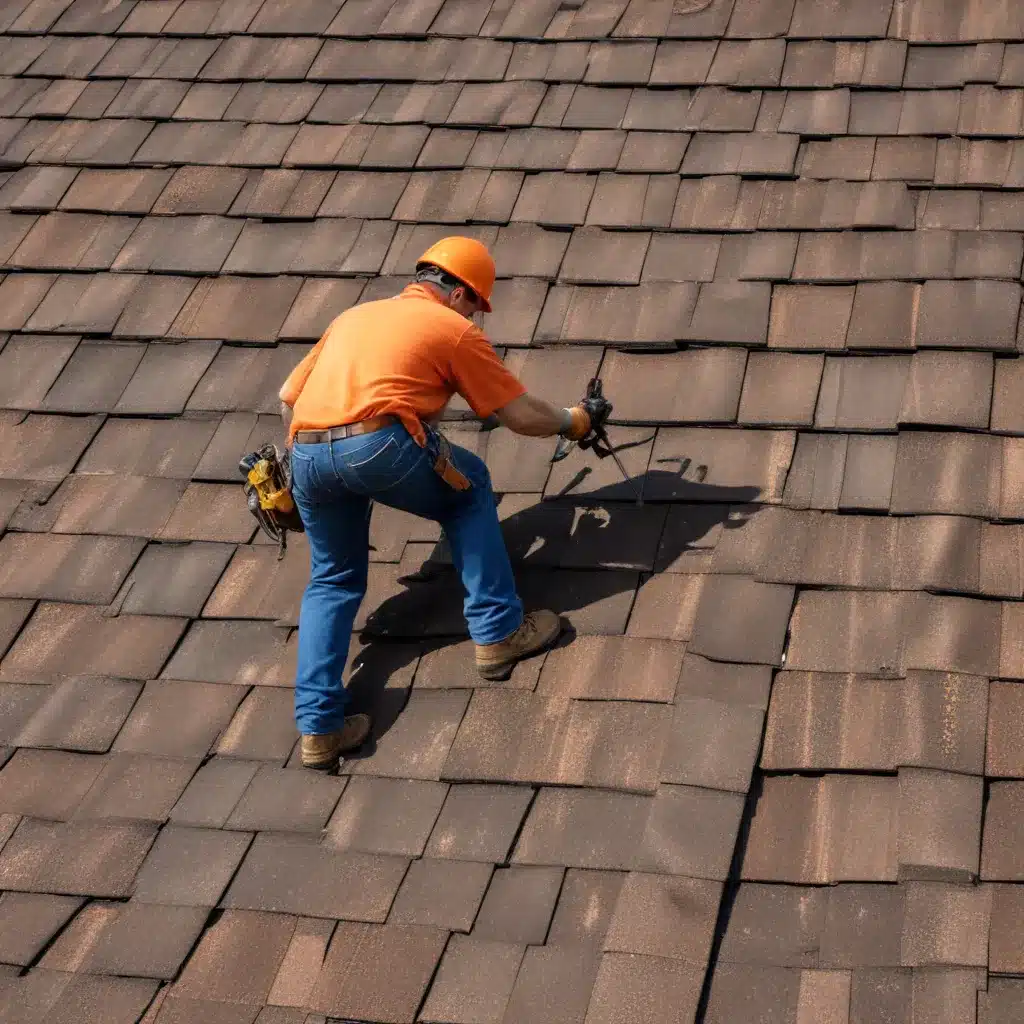
Navigating Roofing Safety: A Comprehensive Guide
As a seasoned roofing professional, I understand the importance of prioritizing safety when it comes to maintaining and repairing roofs. Whether you’re a homeowner tackling DIY projects or a seasoned contractor, adopting the right safety practices is crucial for ensuring a successful and incident-free roofing experience.
In this comprehensive guide, we’ll delve into the essential safety considerations, expert techniques, and practical tips that will empower you to tackle roofing tasks with confidence and minimize the risk of accidents. From proper ladder usage to fall protection systems, we’ll cover a wide range of safety-focused topics to help you secure your roof and protect yourself and your team.
Ladder Safety: The Foundation of Roofing Security
One of the most fundamental aspects of roofing safety is proper ladder usage. Extension ladders are commonly used for reaching high areas, including gutters, roof edges, and security lighting. However, they can also pose significant risks if not handled correctly.
To ensure safe ladder practices, consider the following tips:
Inspect and Maintain Your Ladder:
Thoroughly inspect your ladder before each use, checking for any signs of damage, loose parts, or wear and tear. Ensure that all locking mechanisms and safety features are functioning properly. Regular maintenance, such as lubricating moving parts and cleaning the ladder, can also help extend its lifespan and improve its stability.
Secure the Ladder Properly:
When setting up an extension ladder, make sure it is positioned on a stable, level surface. Angle the ladder at the appropriate ratio (typically 4:1) and secure it at the top to prevent it from slipping or shifting. Consider investing in ladder stabilizers or roof hooks to provide additional stability.
Climb Safely:
Always maintain three points of contact when climbing a ladder, utilizing both hands and one foot or both feet and one hand. Avoid overreaching, which can compromise your balance and stability. If you need to move the ladder, descend it first before repositioning.
Use Fall Protection Gear:
For added safety, consider using a personal fall arrest system (PFAS), such as a safety harness and lanyard, when working on a ladder at height. Secure the lanyard to a reliable anchor point on the roof or structure to prevent falls.
Roof Access and Fall Protection Systems
Beyond ladder safety, comprehensive fall protection systems are essential for safeguarding roofers working at heights. These systems can include a variety of components, from harnesses and lanyards to anchor points and guardrails.
Harnesses and Lanyards:
Properly fitted safety harnesses and lanyards are the foundation of any fall protection system. Ensure that the harness fits snugly and that the lanyard is the appropriate length to allow for safe movement while preventing a free fall.
Anchor Points:
Secure anchor points, such as roof anchors or structural members, provide a reliable attachment point for your fall protection system. These anchor points must be capable of withstanding the forces generated in the event of a fall.
Guardrails and Warning Lines:
Guardrails, installed along the roof’s perimeter, can help prevent accidental falls. Warning lines, used to mark the boundary of the roof’s safe work area, can also be an effective safety measure.
Roof Access and Walkways:
Providing safe access to the roof, such as through the use of permanent stairs or ladders, can significantly reduce the risk of falls. Incorporating designated walkways and platforms can also help minimize the need for exposed roof work.
Roofing Material Selection and Handling
The choice of roofing materials can also impact safety. Certain materials, such as slate or ceramic tiles, may be more prone to breakage and require additional precautions during installation and maintenance.
Material Characteristics:
When selecting roofing materials, consider their weight, fragility, and slip resistance. Heavier materials may require specialized equipment for handling, while fragile materials may require extra care to avoid breakage and potential hazards.
Proper Material Handling:
Ensure that roofing materials are stored and transported safely. Use appropriate lifting techniques, such as team lifts or mechanical assistance, to avoid strains or injuries. Maintain clear and organized work areas to prevent tripping hazards.
Slip Resistance:
Choose roofing materials with adequate slip resistance, particularly in areas prone to moisture or slopes. The use of anti-slip coatings or safety treads can further enhance traction and reduce the risk of falls.
Comprehensive Safety Training and Awareness
Effective safety practices go beyond just the physical aspects of roofing work. Comprehensive safety training and a culture of safety awareness are essential for ensuring the well-being of your team.
Safety Training Programs:
Implement comprehensive safety training programs that cover a wide range of topics, including ladder safety, fall protection, material handling, and emergency response procedures. Ensure that all team members, including subcontractors, are thoroughly trained and up-to-date on the latest safety protocols.
Safety Awareness and Communication:
Foster a strong culture of safety awareness by encouraging open communication, regular safety meetings, and the reporting of any potential hazards or near-miss incidents. Empower your team to speak up and take an active role in identifying and addressing safety concerns.
Continuous Improvement:
Regularly review and update your safety policies and procedures to incorporate industry best practices, new technologies, and lessons learned from past experiences. Encourage feedback from your team and stay informed about emerging safety trends and regulations.
Conclusion
Roofing safety is a multifaceted and crucial aspect of the industry, and by implementing the best practices outlined in this guide, you can help ensure the security and well-being of your team and your clients. From proper ladder usage to comprehensive fall protection systems, material selection, and comprehensive safety training, every element plays a vital role in creating a safe and successful roofing project.
At Roofers in Northampton, we are committed to promoting and upholding the highest safety standards in the industry. By staying informed, proactive, and dedicated to continuous improvement, we can build a safer, more resilient roofing industry that protects both our workers and our clients.

